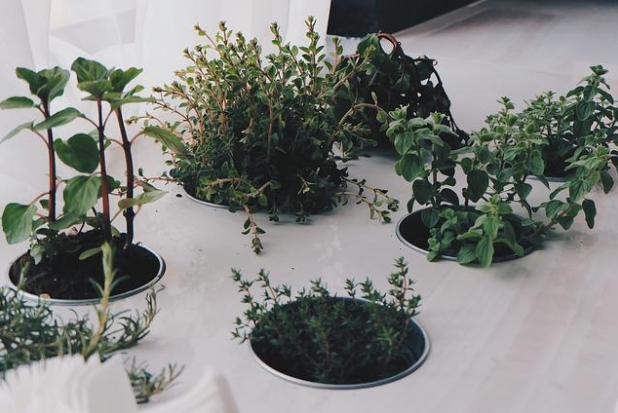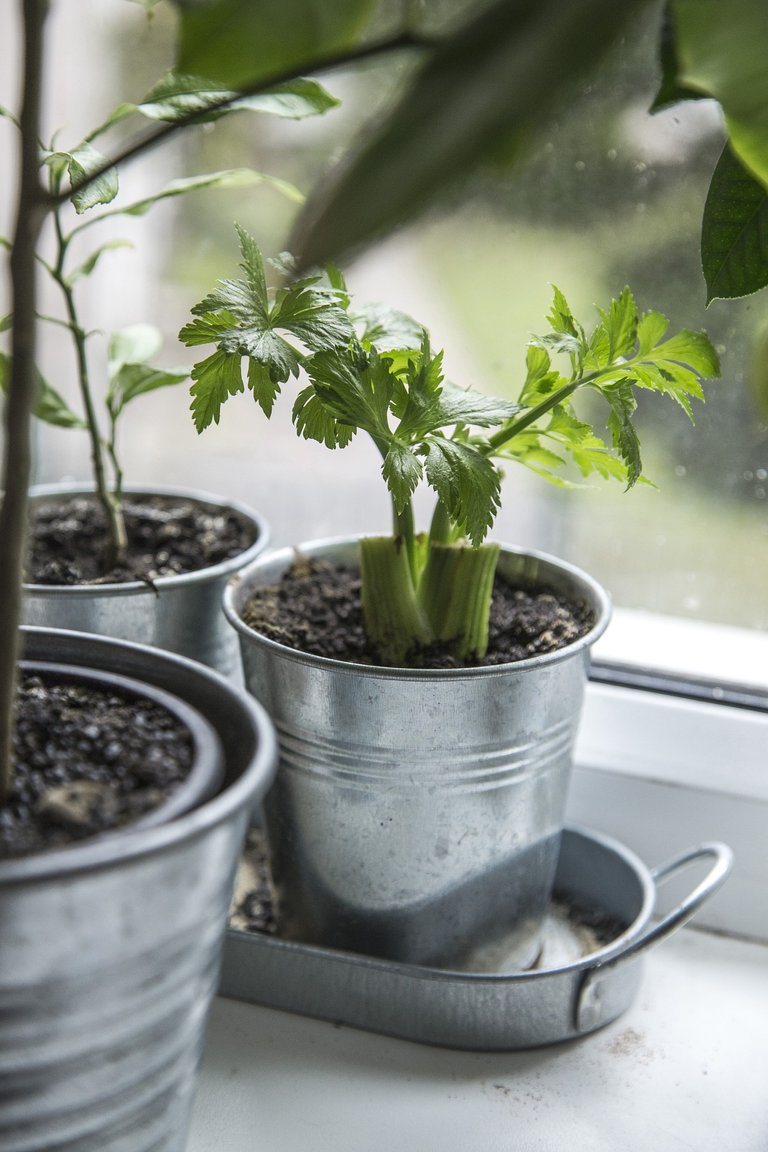Your indoor herb garden will be convenient, fragrant, and pest-free. They require little maintenance and are simple to start!
Fresh herbs have been used for medicinal purposes for hundreds of years. Now, it is becoming clear that these plants contain natural health benefits, including antioxidants to help protect the immune system.
Additionally, cooking with aromatic herbs adds a unique flavor that allows the chef to decrease salt and butter as essential ingredients, making the resulting meal healthier and more enjoyable.
Choosing the Best Location and Containers for the Plants

Most herbs require six to eight hours of sunlight per day. A south-facing window is best, but any area in the home that is well-lit for several hours a day will work just fine.
More from the Homestead Guru: Teach Your Children Wild Edible and Medicinal Plants with this Creative Board Game
Planter boxes create a beautiful display of herb bouquets. However, some herbs, mint in particular, can take over entire planters very quickly, choking out their neighboring basil and sage plants. For this reason, individual containers are recommended. They must be food-safe so any materials containing lead or other dangerous chemicals must be avoided; plain terra-cotta is always a smart choice.
Soil, Water, and Care for Your Indoor Herb Garden
Herbs require little attention to thrive. They require well-drained, loose soil and sufficient sunlight. If possible, herbs need to be lightly watered on a schedule. Mornings are best to allow the plant to dry in the sun throughout the day. Be careful not to over water, but if you notice one of your plants wilting, water it immediately!
More from the Homestead Guru: No Sun? No Problem! 10 Shade Tolerant Herbs
Fertilizer can cause herbal plants to grow very thickly and very quickly, but plants grown in fertilized soil tend to be less flavorful. Plus, you run the risk of losing the organic charm of the herb with the addition of chemical. If you feel your plants need a little help, try a natural compost fertilizer using natural, organic waste such as vegetable peelings and trimmings from houseplants. This is easy to do at home—simply combine your natural waste with garden soil in a corner of the back yard and allow it to decompose. Compost is a wonderful natural way of enhancing your soil.
Deciding What to Plant in Your Indoor Herb Garden

If you’re a seasoned cook and know which of your specialty dishes require which herbs, grow what you need! But if you’re a beginner, here are a few ideas for your starter garden. Young plants can be found at the local nursery, farmer’s market, or even in the produce section at the grocery store.
1. Basil:This aromatic herb is as tasty as it is beautiful. It will come in handy for fresh mixed salads, Italian dishes, and Thai food.
2. Rosemary: This hearty plant is most popular with roast chicken. It also compliments breads, vegetables, and even baked goods!
3. Sage:A strong herb with a likable flavor, sage is frequently used in stuffing or dressing and in cooking turkey, chicken, or pork.
4. Parsley: Most people think parsley is simply a garnish for the dinner plate, but in fact, this herb is lovely in salads, pastas,and dressings.
5. Mint:Spearmint is especially well-loved. These fresh-tasting leaves are the perfect addition to summertime teas and cocktails, and they add a special aspect to Thai dishes, salads, and lamb.
As you grow in green-thumb confidence, add more herbs to your collection including oregano, thyme, dill, chives, and tarragon. Lavender, lemon balm and bee balm will add a soft and fresh twist to your normal recipes.More from the Homestead Guru: Learn How to Garden by Planting Herbs in Your Window Sill
Fresh Ideas for Using Fresh Herbs
indoor herb garden underway, have fun experimenting! Fresh herbs can add a refreshing taste to every day poultry, meats, fish, vegetables, and breads. Get creative! Try fresh mint mojitos, herbal cocktails, olive oil infusions, and home-made herbal teas. Dried herbs work well in scent sachets, bath scents, and potpourris, while fresh herbs compliment flower arrangements.This guest post was written by Ann Sanders for the Homestead Guru.
I upvoted your post.
Keep steeming for a better tomorrow.
@Acknowledgement - God Bless
Posted using https://Steeming.com condenser site.
This post was very inspiring. I am not very good with plants, but this seems like something I might possibly be able to handle. Thanks!
This looks tastey! I would love to have some fresh herbs I could smell in the kitchen. Great ideas!